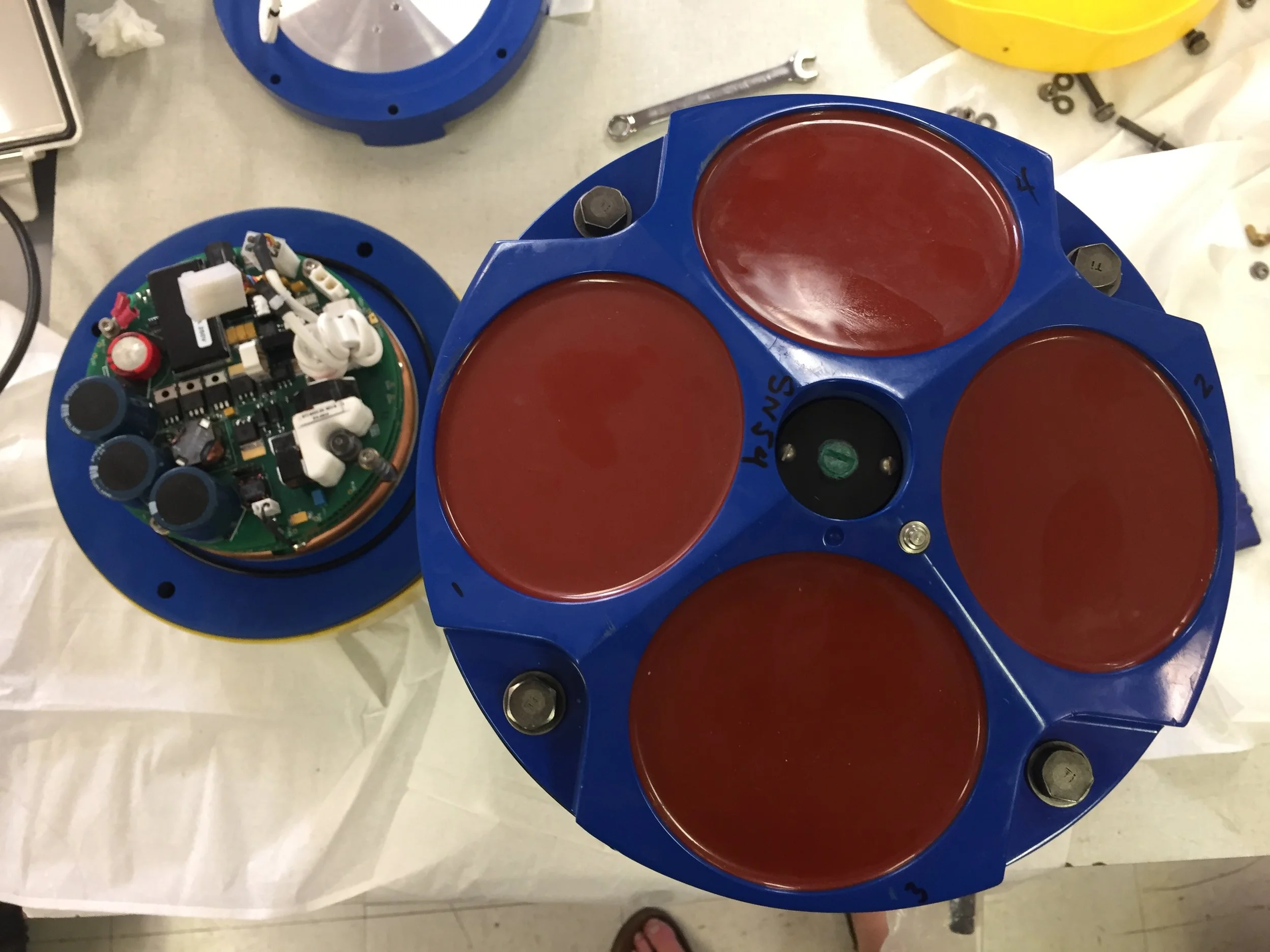By Akua
So, what the does the prep work for a glacier expedition look like? For the past few weeks, the lab witnessed an extreme bustle of activity. The breakroom whiteboard captured the long list of activities needed to make our upcoming trip go smoothly – cataloging everything from equipment to purchase and instruments to clean, to flight information and housing logistics.
I quickly learned the significance of this work. Once in the LeConte fjord, our whole team will be focused on the data collection process, so having all the equipment calibrated and organized beforehand will help make our work more focused and efficient. Seemingly small tasks done ahead of time – measuring out cable lengths and chunks of chain, calibrating compasses, programming the instruments used to collect data – can make a big difference during the actual trip, when the team will only have three days to deploy instruments and gather data.
At the top of the list this week was final testing of the Robotic Oceanographic Surface Explorers (ROSE) and building the raft that will be used to deposit our instruments at the base of the LeConte Glacier ice cliffs. During the expedition, ROSE will navigate to the terminus of the glacier with the raft in tow, carrying the instruments, floats, and anchors that will be deployed to analyze subglacial melt. These devices are the crux of the expedition, because they allow us to conduct acoustic analysis in regions too dangerous for the team to explore in person. ROSE is ultimately what will help us get close enough to the edge of the glacier to listen to ice melt at its base.
We also needed to calibrate and program the different instruments we’ll use to collect data during the trip. For this expedition, we will be using both CTD SeaBirds and Acoustic Doppler Current Profilers (ADCPs). The SeaBirds are standard oceanographic instruments that will be used to measure the conductivity, temperature, and pressure of water in the LeConte Bay. To gather data about the velocity of water flow within water columns at the glacier’s base, we’ll use ADCPs. Ultimately, both instruments are important and weaving the two types of data together will allow us to develop a more comprehensive understanding of how ocean water and subglacial melt interact at the ice-ocean boundary.
Finally, after everything was calibrated and built, it was time to pack all our gear into the container that will meet us in Petersburg, Alaska! It was a busy, busy week and it left me with a much greater appreciation for all the ground work that must be done to make the expedition possible.
Here are a few more photos and videos of the instrument preparations.

![IMG_8307[1].JPG](https://images.squarespace-cdn.com/content/v1/5351ccd6e4b0e85fd91f1c39/1535382239784-0F3F5VMY4E6FD3YXQTKM/IMG_8307%5B1%5D.JPG)
![IMG_8319[1].JPG](https://images.squarespace-cdn.com/content/v1/5351ccd6e4b0e85fd91f1c39/1535382492907-XKA5GL1Z3A5N17928WM5/IMG_8319%5B1%5D.JPG)
![IMG_8303[1].JPG](https://images.squarespace-cdn.com/content/v1/5351ccd6e4b0e85fd91f1c39/1535382353839-1WT744A6FLHAWXF3IZOE/IMG_8303%5B1%5D.JPG)



